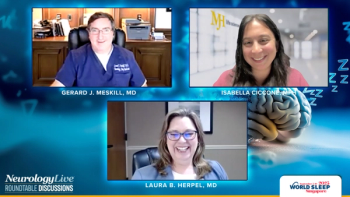
Pain, Anxiety Identified as Relevant Comorbidities in Adults With Cerebral Palsy
Although pain is a known problem for children and adolescents with the disease, not much is understood about pain in adults with CP.
A recent study found that pain and anxiety are relevant comorbidities in adult patients with cerebral palsy (CP), particularly after orthopedic multilevel surgery. Pain occurrence in adults with CP is higher than in children with the condition, and the occurrence further correlates with the Oswestry Disability Index (ODI), investigators concluded.1
A total of 24 adults with CP were included in the monocentric prospective study, with a mean age of 38.0 years (SD, 7.1). Long-term data were collected from ambulant patients at levels 1-3 in the Gross Motor Function Classification System (GMFCS), all of whom had undergone orthopedic multilevel surgery during adulthood. These patients also had preoperative and postoperative 3-dimensional gait analysis, which included Gait Profile Score (GPS).
Persistent pain was reported by 16 patients (67.6%), and 10 patients (41.7%) reported that they had pain for more than 6 months. Both pain and anxiety were experienced by 13 patients (54%), but there was no correlation of the GPS with pain, Gross Motor Function Classification System, and ODI. Comparably, the ODIwas positively correlated with the GMSCS (r = 0.39; P = .05) and pain (r = 0.57; P = .004).
“It is important to identify possible risk factors resulting in gait deterioration, pain, and emotional distress, including anxiety,” corresponding author Cornelia Putz, MD, medical division manager, Department of Technical Orthopedics, senior physician, Child Orthopedics, Neuro-Orthopaedics and Foot Surgery Section, Heidelberg University Hospital, in Heidelberg, Germany, et al wrote. “Multimodal pain therapy concepts should be established in rehabilitation programs to prevent chronic pain and to help CP patients cope with physical and emotional distress. Patients need to be informed during the incidence of pain and anxiety in adulthood during transition.”
READ MORE:
Patients were administered a questionnaire, which included the Visual Analog Scale (VAS), ODS, and the European Quality of Life 5 Dimensions 3 Level. Mean total preoperative GPS improved from 15.6 (SD, 3.5) to 11.6 (SD, 2.9) postoperatively, and there was a mean difference of 4.07 (SD, 3.5). Mean VAS score was 3.25 (SD, 3.2), with 4 patients (16.4%) occasionally taking analgesics for pain, including ibuprofen (n = 3) and ibuprofen DL-lysin (n = 1).
Lower limb, namely the foot and knee, was the most common location of pain, reported by 6 patients (23%). Investigators concluded the subjective main cause of pain was the basic disease in 6 patients (25%), and physical or emotional distress in 7 patients (29.2%). Fifteen patients (62%) had issues with mobility, 11 (45.8%) with self-care, 14 (58.3%) with usual activities, and 14 had anxiety/depression. The mean ODI result was 25.6%, which was found to correspond to a moderate disability (21%-40%). There were 14 men (58.3%) and 10 women (41.7%) in the study, with no correlation observed between pain in relation to sex with social status (P = .22) and professional status (P = .043).
The study was limited by the complexity of individual surgical procedures for patients within the cohort, causing Putz et al to note that findings “should be interpreted within the content of the study group.” Additionally, there was no representative control group consisting of patients who did not undergo surgery, and there was a smaller sample size with potential overrepresentation of GMFCS 2.
REFERENCE
1. Götze M, Geisbüsch A, Thielen M, et al. Pain in adults with cerebral palsy after single-event multilevel surgery. Am J Phys Med Rehab. 2022;101(2):119-123. doi:10.1097/PHM.0000000000001741
Newsletter
Keep your finger on the pulse of neurology—subscribe to NeurologyLive for expert interviews, new data, and breakthrough treatment updates.




































